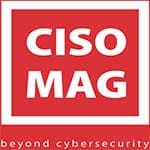The talk of the town, the next big thing, a revolutionary breakthrough – the 5G technology lives up to all these clichés. It captures the imagination with potential use cases capitalizing on the impressively high speed, low latency, and mind-blowing network capacity.
Contributed by David Balaban
The state of 5G deployment currently ranges from large-scale field testing to commercial roll-outs in small portions around the world. Next-generation connectivity is already available in dozens of cities in the U.S., Europe, and East Asia. Moreover, these advanced telco systems are expected to become the backbone of digital economies soon.
Just like any new technology, 5G networks can be low-hanging fruit for threat actors who seek to expand their malicious reach. Therefore, it’s in the best interest of governments to assess and tackle the entirety of potential security issues prior to the ubiquitous implementation of the tech.
These concerns have recently incited some expert discussions in the EU. In October, EU member states released a report on “coordinated risk assessment of 5G networks security”. It came in response to a recommendation issued by the European Commission, the executive branch of the EU, in March 2019. Here are the key takeaways from the officials’ findings.
Supplier monopoly deemed as a major risk
The report emphasizes the possible pitfalls of using a single supplier of 5G equipment, namely the Chinese technology giant Huawei. Interestingly, the document contains no direct references to the company in question, although the collaboration is officially underway. Network infrastructure with the solo contractor at its core is susceptible to a number of issues, including a shortage of telecommunications gear, dependencies on the supplier’s commercial well-being, and primitive malware attacks.
Considering this paradigm, the researchers claim network operators will have to rely too heavily on the contractor that may undergo commercial pressure and therefore fail to carry through with its obligations. The adverse influence may stem from economic sanctions affecting the supplier, as well as from a merger or acquisition. Consequently, such cooperation has a single point of failure (SPOF) that might undermine the successful adoption of the technology and stability of the network down the road.
An extra factor is a strong link between the supplier and the government of the country it is based in. It means there is a chance of state-level interference with the equipment provider’s activities. Furthermore, a lack of democratic checks and balances and the absence of data protection agreements between the EU and the said country are serious roadblocks endangering the future partnership.
According to the officials, one more facet of the peril comes down to a tightening connection between the EU’s telco networks and third-party software systems. The elevated scope of access the supplier will have to the region’s 5G infrastructure and the transferred data is a lure for cybercriminals who may take significant efforts to exploit these systems.
Additional security challenges – the big picture
Aside from the obvious caveats arising from the increased role of hardware and software suppliers, the joint report provides a lowdown on other possible security effects of 5G network deployment across the EU. A summary of these challenges is as follows.
More entry points for attackers
The architecture of 5th generation wireless networks is largely based on software. This hallmark makes them particularly vulnerable to security imperfections resulting from vendors’ inappropriate software development processes. Critical flaws may allow malefactors to inject backdoors into the applications and thereby maintain long-lasting surreptitious access to different layers of the targeted 5G infrastructure.
5G network slicing issue
Given that 5G will enable numerous services and applications operating within different virtualized environments, such as enterprise and government networks, the importance of securing these logically segregated ecosystems is going to grow. Unless reliably isolated and protected, these network segments (dubbed “slices”) can be exposed to data leaks…[…] Read more »…..
This article first appeared in CISO MAG.
<Link to CISO MAG site: www.cisomag.com>



ROLE DESCRIPTION
We are looking for a Membership Manager to join the company and take on one of the most opportunistic roles the industry has to offer. This is a role that allows for you to create and develop relationships with leading solution providers in the enterprise technology space. Through extensive research and conversation you will learn the goals and priorities of IT & IT Security Executives and collaborate with companies that have the solutions they are looking for. This role requires professionalism, drive, desire to learn, enthusiasm, energy and positivity.
Role Requirements:
Role Responsibilities:
Apex offers our team:
Entry level salary with competitive Commission & Bonus opportunities
Apex offers the ability to make a strong impact on our products and growing portfolio.
Three months of hands on training and commitment to teach you the industry and develop invaluable sales and relationship skills.
Opportunity to grow into leadership role and build a team
Extra vacation day for your birthday when it falls on a weekday
All major American holidays off
10 paid vacation days after training period
5 paid sick days
Apply Now >>